
What caught our eye - three key stories (week 12, 2024)
Economic shutdown in the energy transition; facilitating inclusion; temperature control is key need
Here are three stories that we found particularly interesting this week and why. We also give our lateral thought on each one.
Read in full by clicking on the link below.
'What caught our eye' like all of our blogs are free to read. You just need to register.
Please forward to friends, family and colleagues if you think they might find our work of value.

Economic shutdown in the energy transition
It's not just the total cost of the alternatives that we need to consider, it's the operating cost advantage.
Much of what we read about transition technologies, such as EVs, heat pumps and renewable electricity generation, focuses on new capacity being added. So new EV sales (vs new petrol and diesel cars) or heat pumps vs gas boilers. And of course the big one, how much of the new electricity generation capacity added is wind and solar.
And in the US the answer to the electricity generation question is more solar, the dark green bar in the chart below.

But, as important as new additions are, what really matters is the installed base. And here progress is slower. According to the US EIA, all renewables combined (so wind, hydro, solar etc) increased their generation last year ever so slightly to 22.8% of the total. So higher than coal and nuclear, but still smaller than gas.
Which prompts the thought, what financial situation would lead to a much faster transition in terms of installed base?
This is why a recent blog from Jim Murchie at Energy income Partners caught our attention. Jim offers an interesting framework.

Put simply, if the new technology has a lower total cost than the old one, the rate of the transition will be driven by how quickly (or slowly) the old equipment reaches its end of life. Which in the case of power stations is c. a 40 year life span, and for cars, around an average of 12-15 years.
So in this case, renewables would take around 2.5% market share every year (1/40 years), and EVs a faster 6-7% pa. Progress is positive but slow. And the same applies to chemical plants and industrial heat pumps.
But, when the total cost of the new technology is less than the operating cost of the old one, change happens rapidly. To quote Jim "the result is that the new technology will be adopted as fast as new units can be built".
As he goes on to say "in some regions of the U.S., natural gas fired power generation, utility scale onshore wind and solar – even without subsidies – have a total cost lower than the operating cost of most coal-fired generators. This is why the decline in coal-fired power generation in the U.S. has been so much faster than the attrition rate".
One obvious implication of this framework is that if we want industry and consumers to electrify, the cost of electricity matters. And it matters a lot. Which is something we pointed out recently in a blog on the new dawn of industrial heat pumps, and what might cause it to take much longer than we hope.
Link to blog 👇🏾
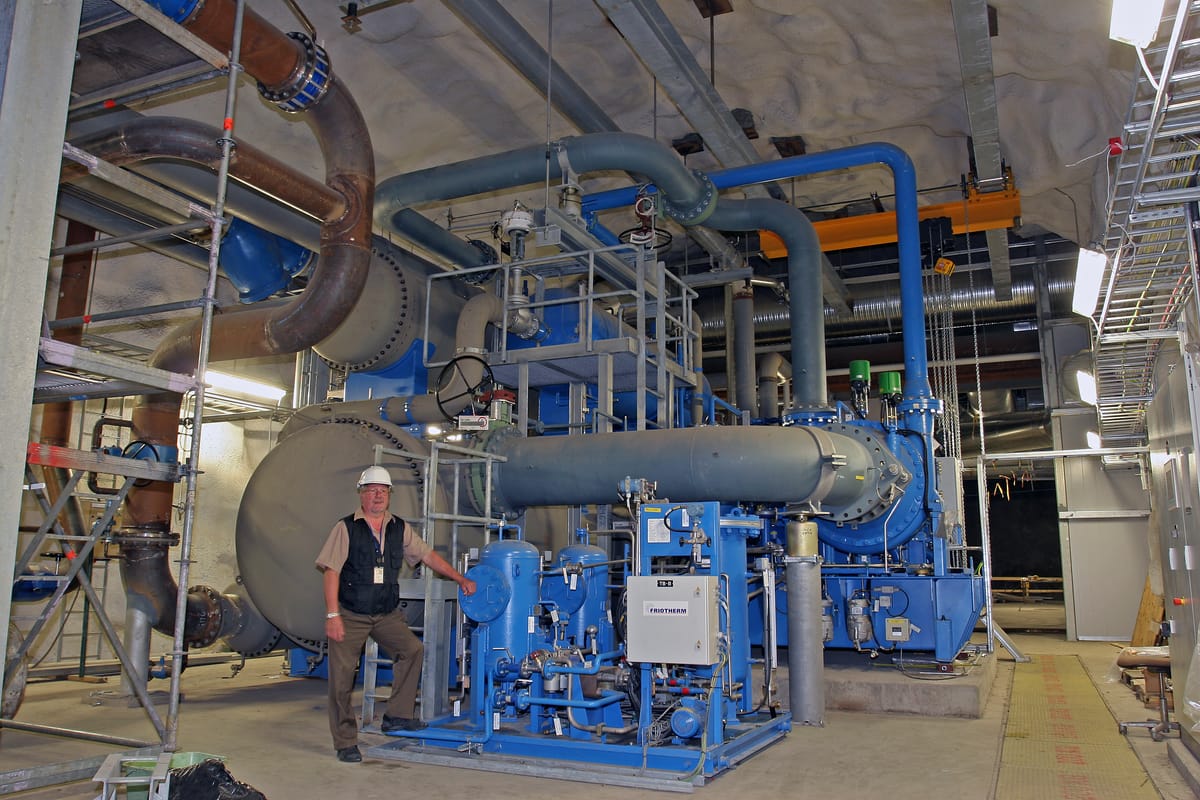
Facilitating inclusion
At a recent Australia and New Zealand Roadshow in London organised by the UK Department for Business and Trade, I met Denise Crouch and Jamie Crathern from LapSafe who talked passionately about their business. LapSafe provide smart lockers, trolleys and cabinets to organisations in the education, healthcare, manufacturing and other workplaces. They have been doing so for more than 20 years.
Designed to be self-service, their products can securely store, recharge and even sanitise mobile IT equipment such as tablets and laptops.


They even have a peripherals vending machine.

An example of where LapSafe products have been used to great effect has been with the London Ambulance Service. Ambulance crew and paramedics carry iPads to access clinical information remotely and improve coordination with emergency departments so that they have all the information they need once the crew arrives with a patient. One issue historically has been the time-consuming process of giving out the devices to crew at the start of their shift, including ensuring they were full charged. This was a manual process that often created delays. LapSafe solved this issue by installing lockers across twenty-two of the London Ambulance stations allowing ambulance crew to collect fully charged devices at the start of their shifts by scanning their ID cards on the locker terminal. The devices are connected to the network when in the lockers and so can be centrally monitored and receive software updates too.

On the face of it LapSafe provide a security solution, keeping IT equipment secure and improving logistics - the London Ambulance service is a great example.
However, taking the education sector as an example, where LapSafe have lockers installed in over three quarters of the UK's universities, they are a crucial facilitator for inclusion.
Even before the COVID-19 pandemic, the move to online or computer aided learning was already happening. The days of completing work using pen and paper are arguably long gone in many universities and even schools globally. However, a typical laptop suitable for university can cost from £299 to £1,000+ which can be out of reach for a lot of households. So providing a laptop that a student can use at no cost to them allows a broader section of the population to participate in higher education.
However 'providing a laptop' doesn't just mean purchasing one. The infrastructure surrounding it is key. In this case, providing a smooth and secure way to actually deliver the devices to the students that are ready to use.
In the sustainability transitions, it is important not to forget those things that support and facilitate the headline solutions. For example to get the majority of our energy produced from renewable sources it is not enough to just replace generation facilities it is also about the supporting infrastructure - both hardware, software and procedures - the sometimes unsung heroes.
Link to blogs 👇🏾


Temperature control is a key electricity demand driver
In Hannah Ritchie's recent Sustainability by numbers blog, she asks the question "what do American households use electricity for?" As many of you will know, Hannah is a data scientist and deputy editor and lead researcher at Our World in Data.
She dives into data from the Residential Energy Consumption Survey (RECS) conducted by the Energy Information Administration (EIA) in 2020 and finds that the majority of electricity usage is about either heating or cooling: space heating, air conditioning, water heating, (de)humidifiers and refrigeration.
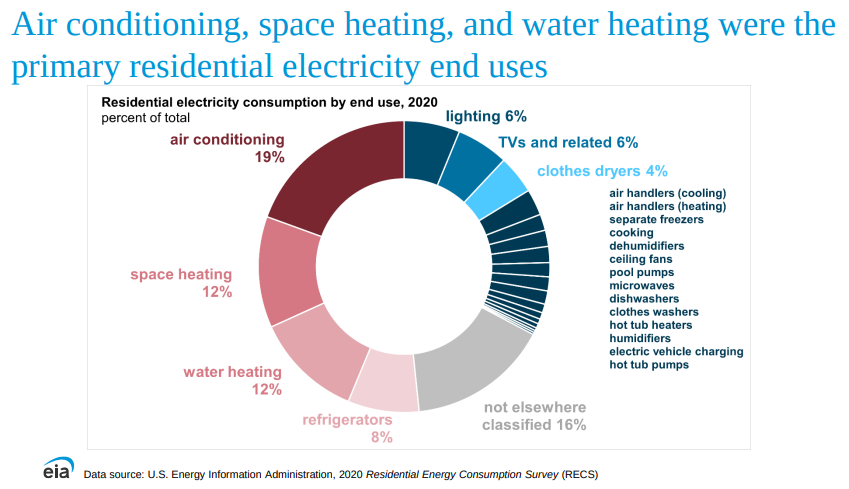
This chart below hints at an important future dynamic. Whilst EV charging, pool pumps and hot tub heating have high individual consumption, it is only EV charging that is likely to move to the top right hand segment of the chart - as Hannah puts it, she doesn't expect "a major ‘hot tub’ boom over the next decade!"
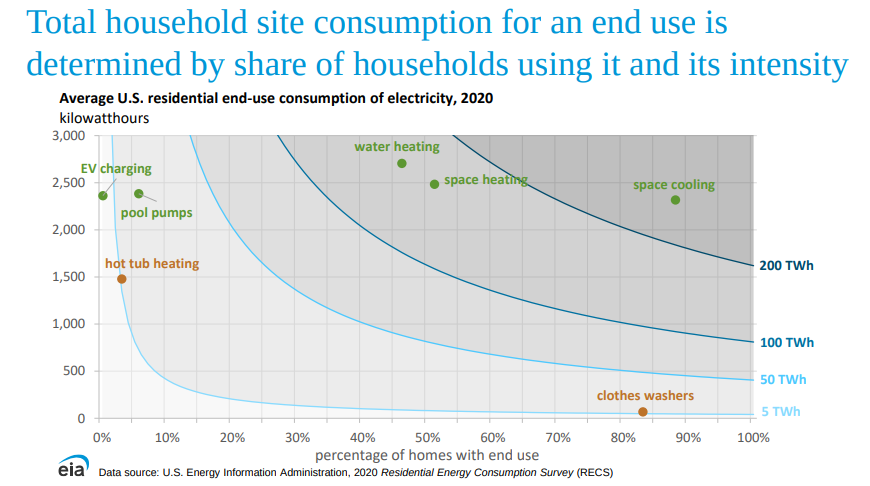
The bottom line is that future energy demand for both residential households and industry is going to be about temperature control.
That is not without challenges. With growing deployment of heat pumps, whilst requiring lower primary energy to control household temperature in the same way that fossil fuel heating systems do, there will be a strain on the current national grids.
Micro grids, comprising local renewables plus storage will help, as will district heating and cooling systems but there are other ways in which the temperature control challenge can be met.
The Institute of Mechanical Engineers published an 'Energy hierarchy' in 2009 to act as a framework to guide sustainable energy policy and decision-making. We have represented it graphically below.
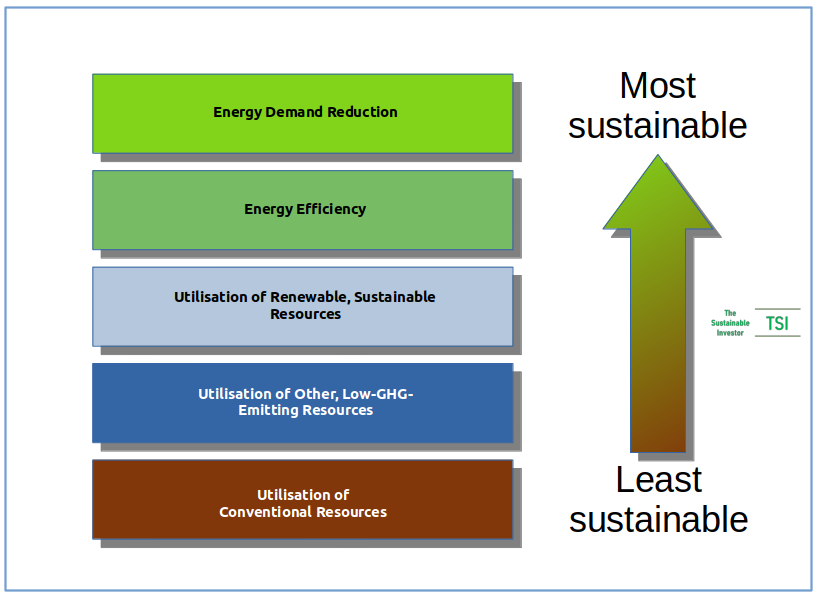
The cheapest and greenest energy is the one we don't use. Efficiency through design, particularly with passive temperature measures will play their part globally - in fact they already are. In this blog from September 2024, we discussed Passive House design, an innovative proposal for using a building as a thermal battery and two examples in India and in Spain where innovative design has provided low cost cooling for a school and a public park.
Link to blog 👇🏾
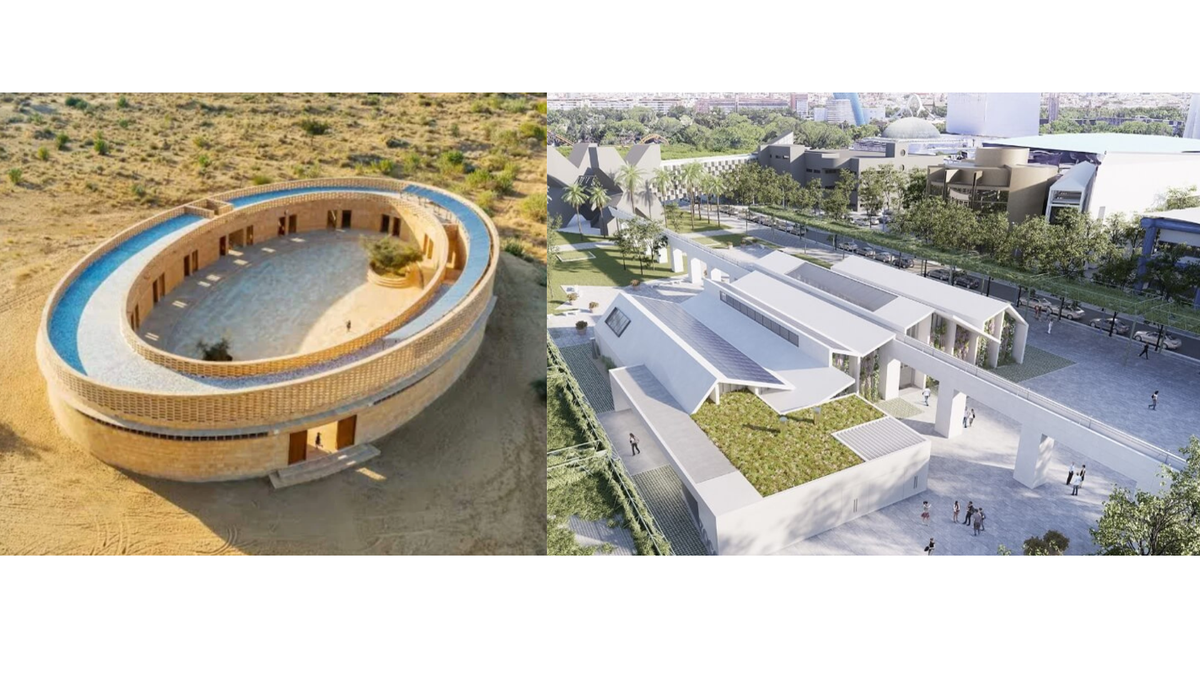
Something a little more bespoke?
Get in touch if there is a particular topic you would like us to write on. Just for you.
Contact us
Please read: important legal stuff.

